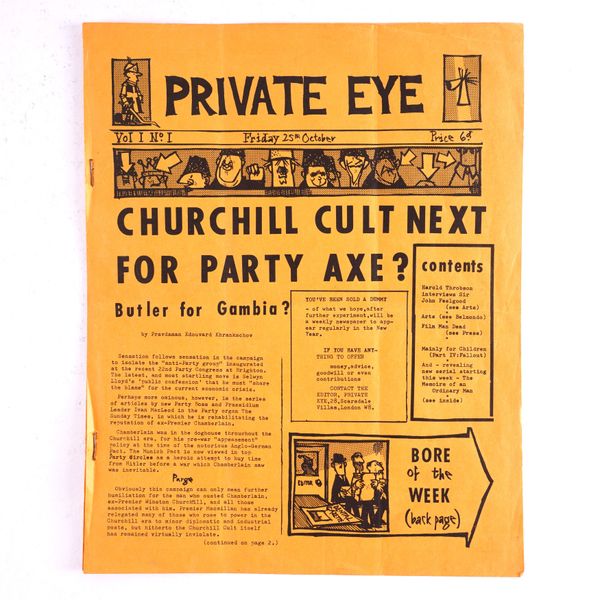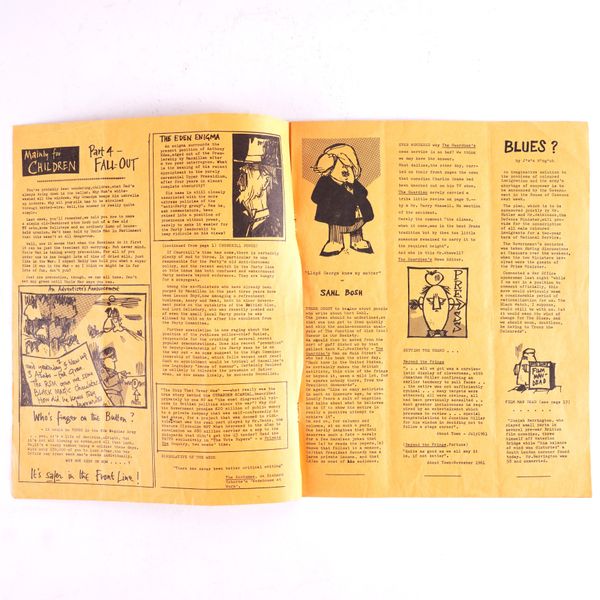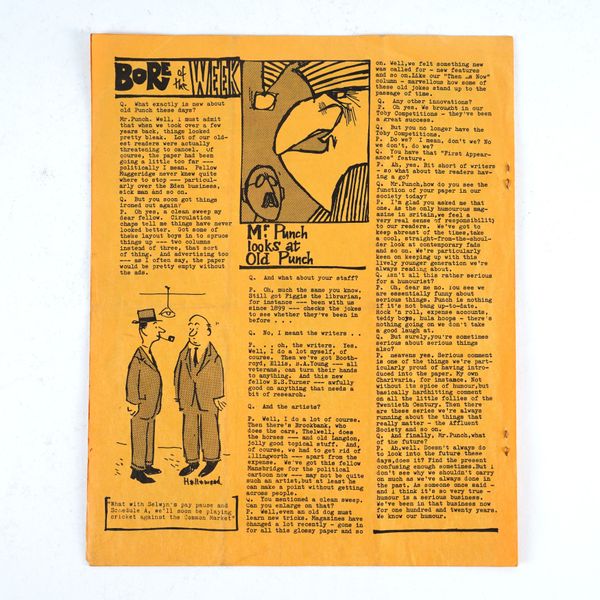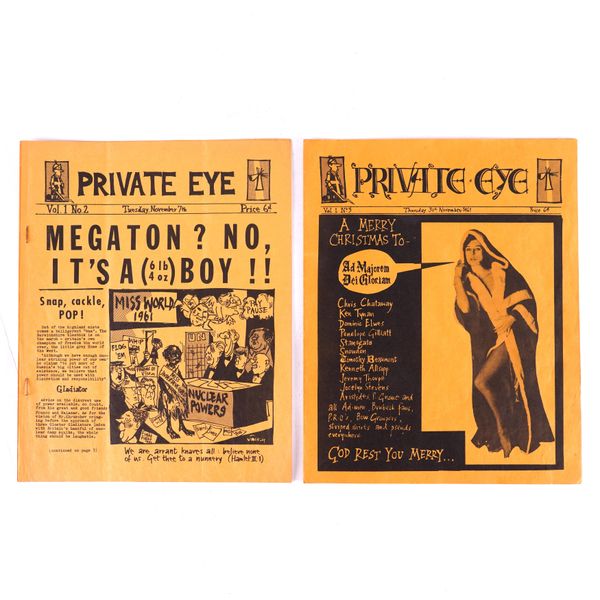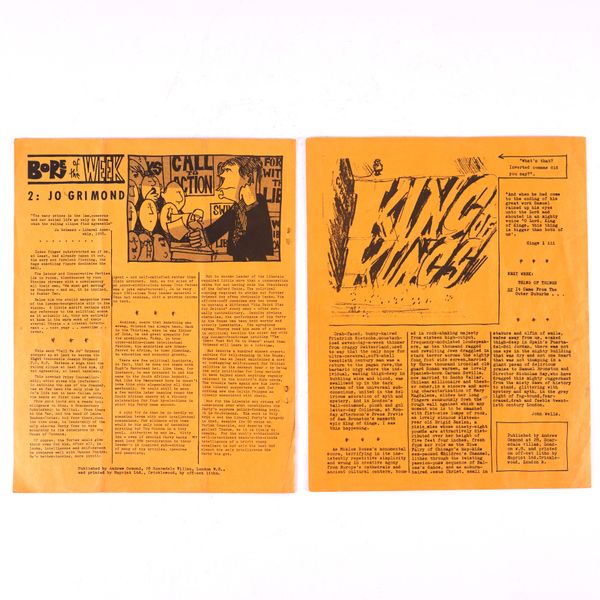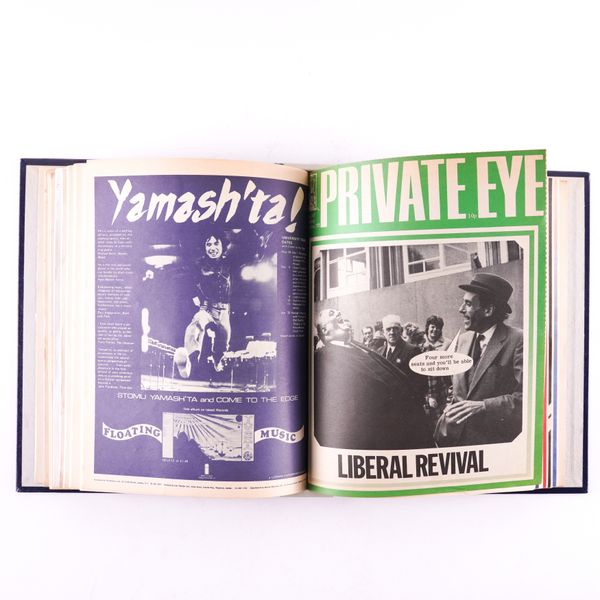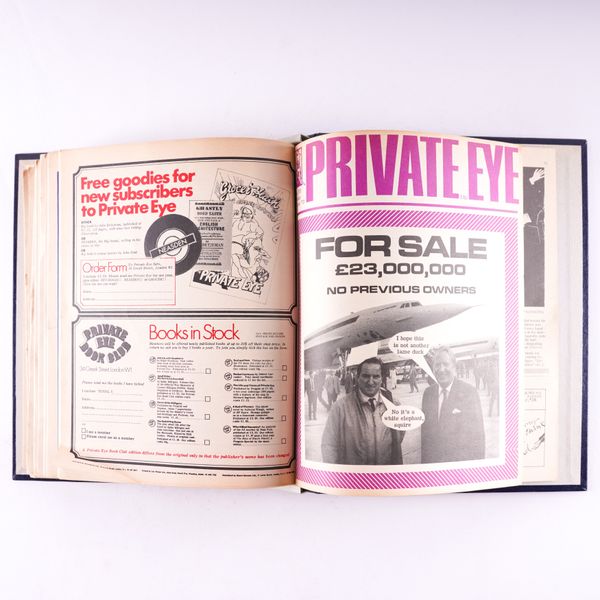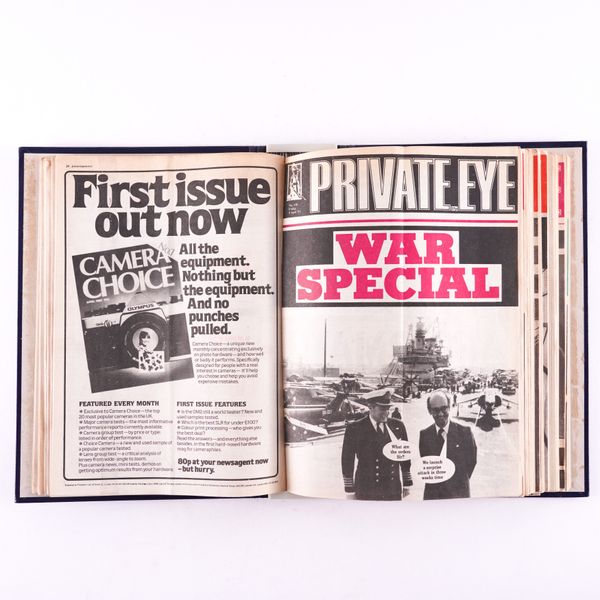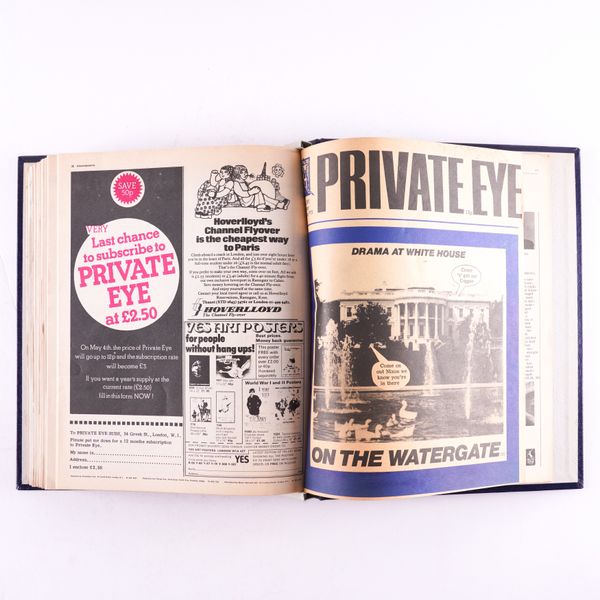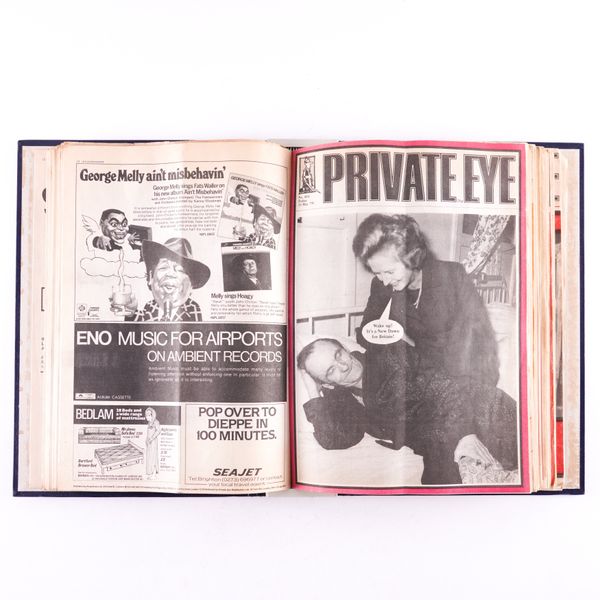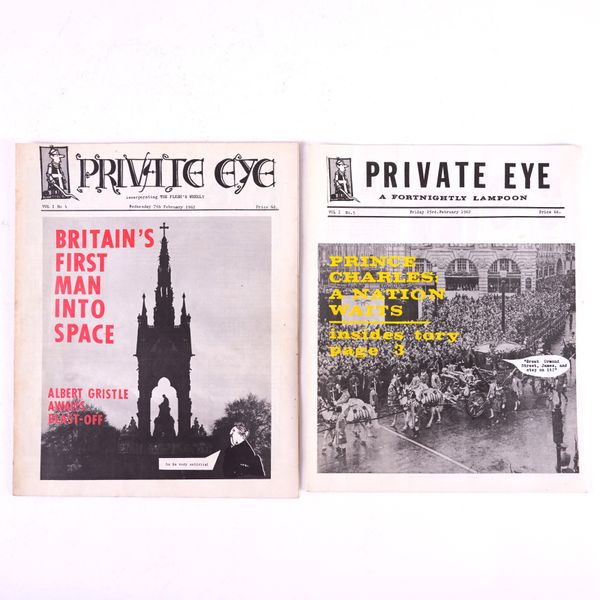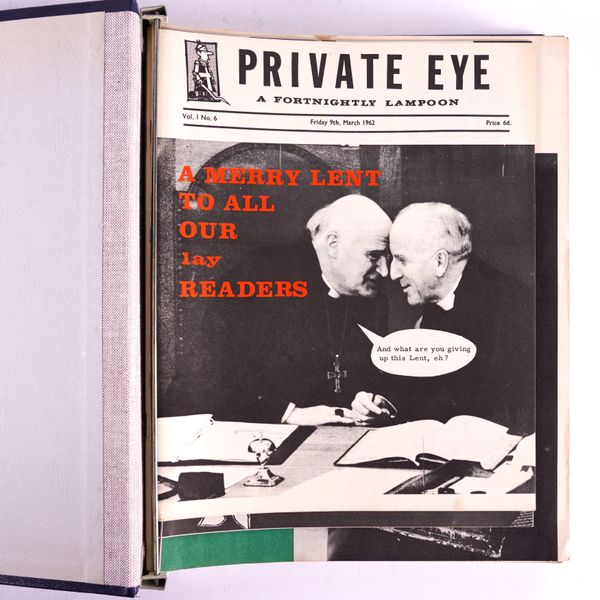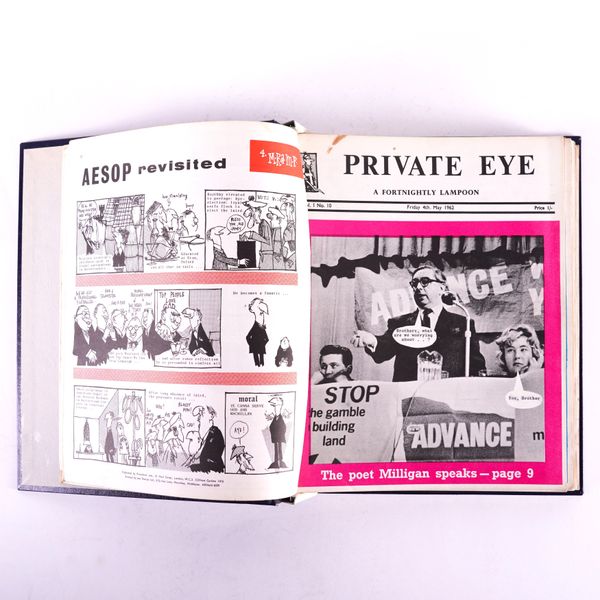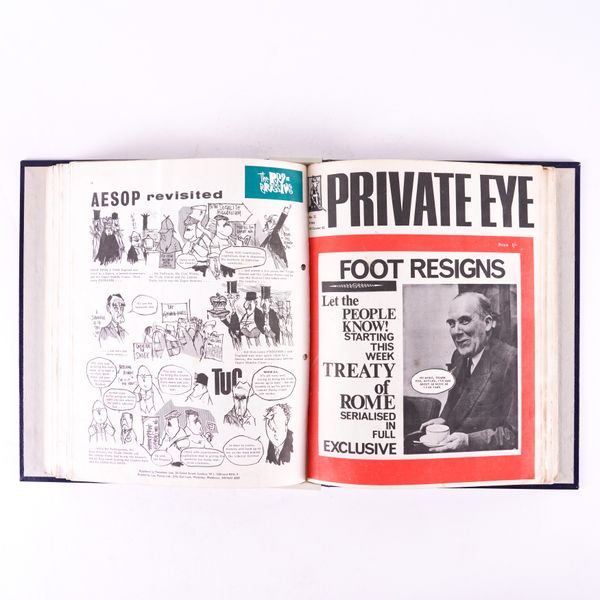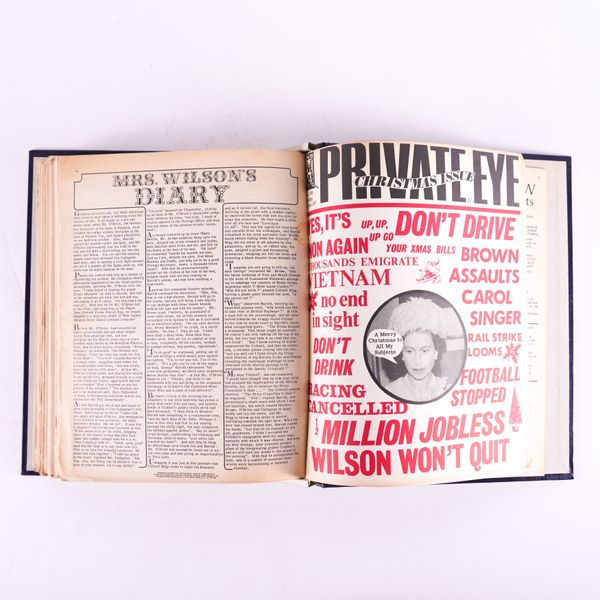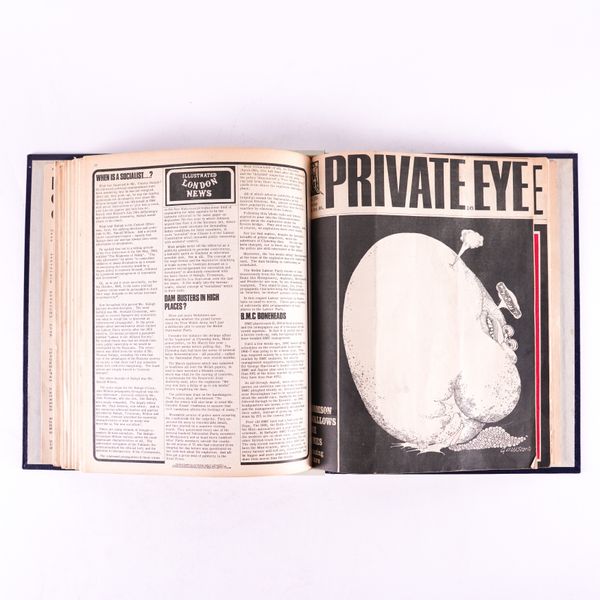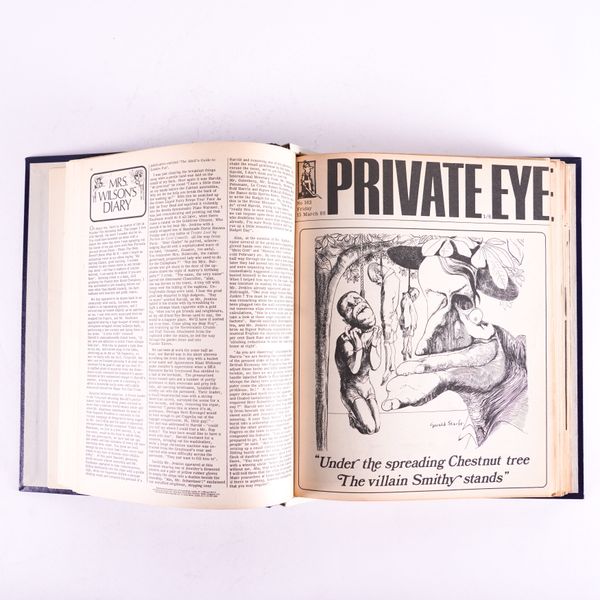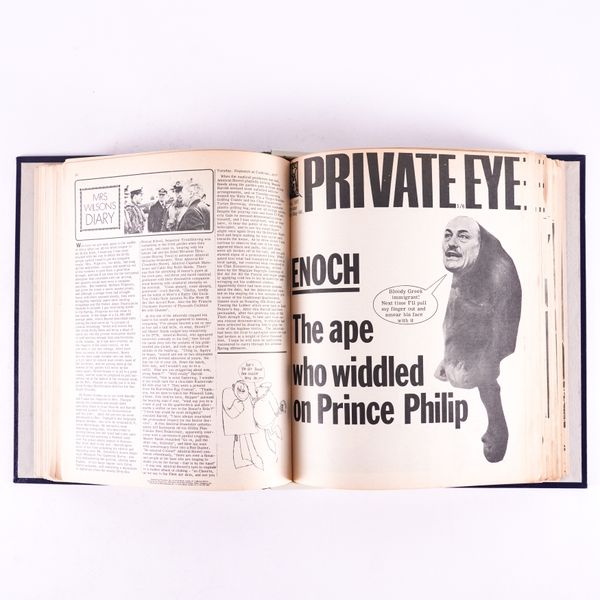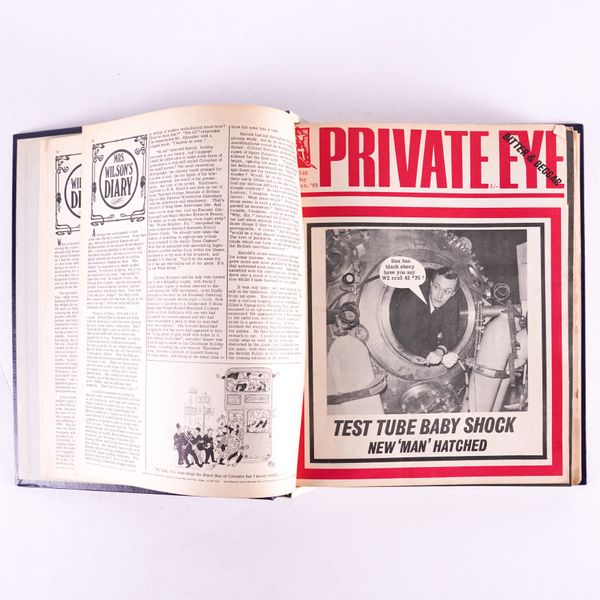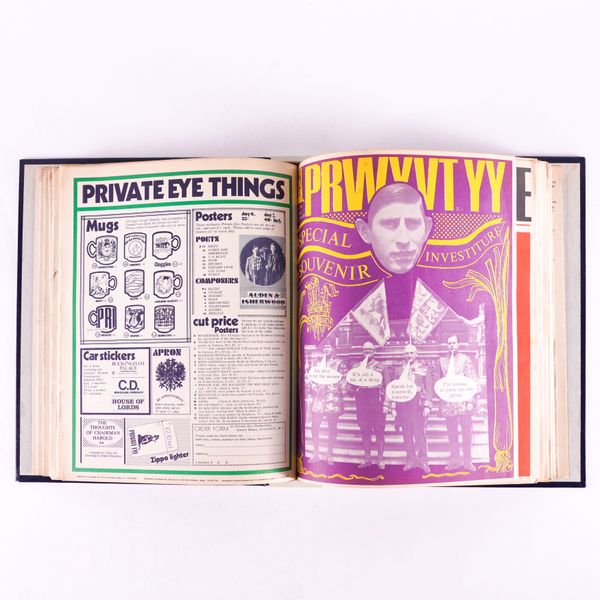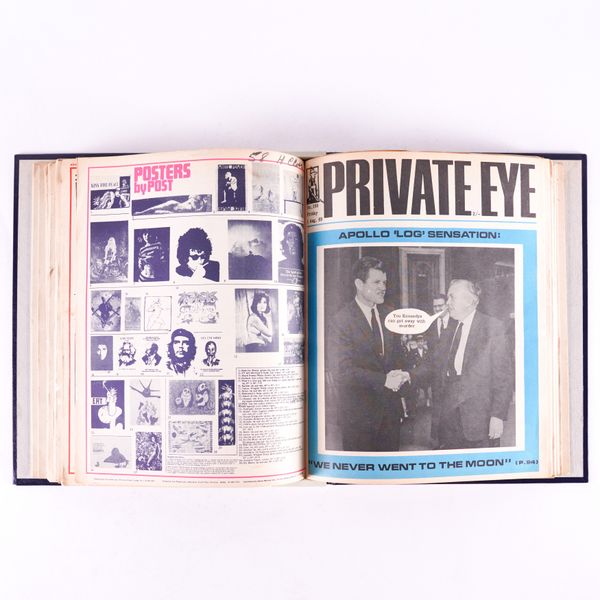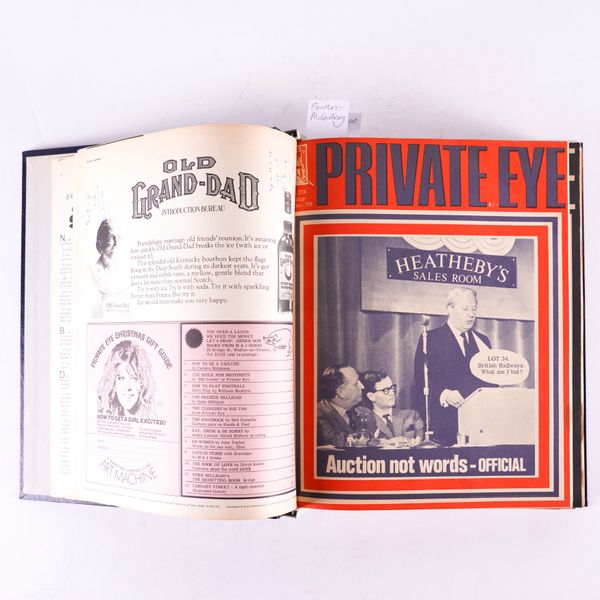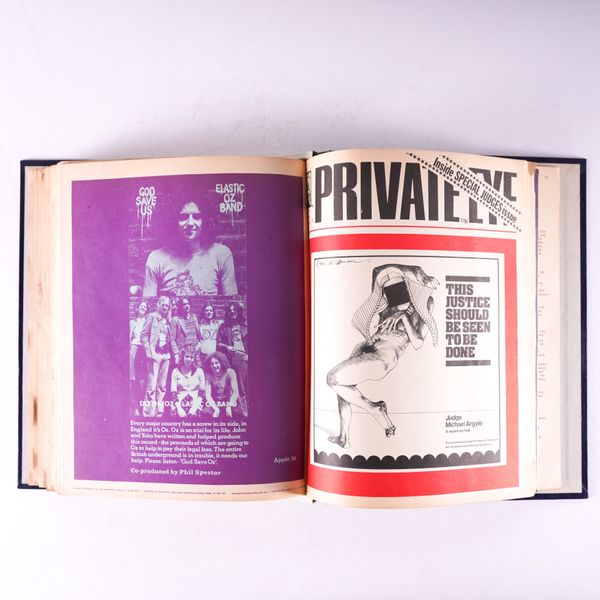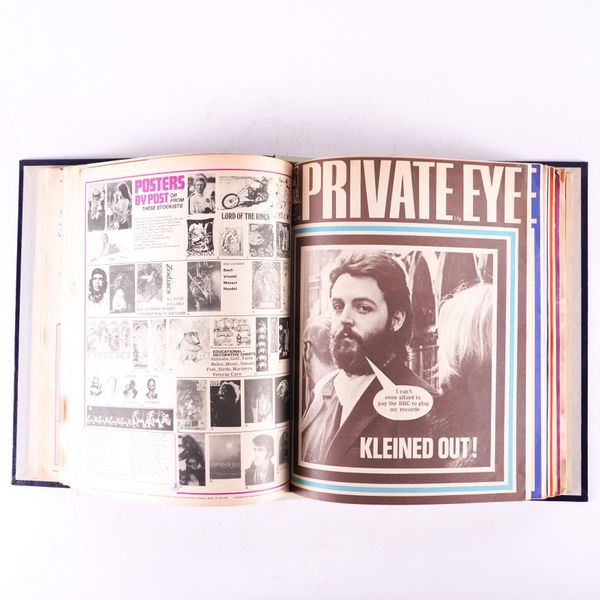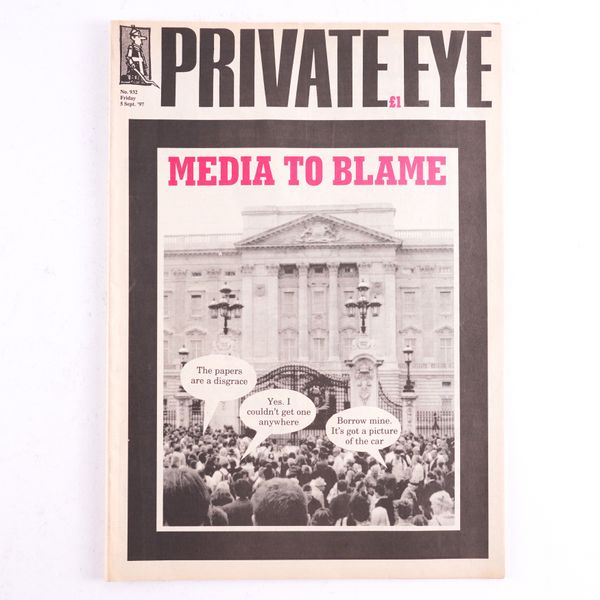Private Eye, London, 1961-2024, numbers 1-1,620, 4to, original wrappers. A COMPLETE RUN OF THE WORLD'S MOST CELEBRATED AND LONG-RUNNING SATIRICAL PERIODICAL, INCLUDING THE EXCEPTIONALLY SCARCE FIRST THREE NUMBERS, PRINTED ON YELLOW PAPER.
| Estimate: | £5,000 - £8,000 |
| Hammer price: | £5,000 |
Private Eye. [London: various publishers], Friday 25th October 1961- March 2024. Numbers 1-1,620, 4to (300 x 210mm). The first 3 numbers printed in "off-set litho" on yellow paper, the remainder printed on white paper; caricatures, cartoons and illustrations by Michael Heath, John Kent, Willie Rushton, Gerald Scarfe, Ralph Steadman, Bill Tidy and many others, advertisements, personal announcements, "lonely hearts" etc. at the end of each number; the later wrappers printed in colours, number 678 and number 712 with acetate "records" inserted into slips on the front wrapper (number 123 with a section cut-out from pp.3-4, number 172 with the corner of one leaf torn away but present, number 214 with a small part of the upper wrapper cut away, number 325 with a tear to the upper wrapper and the first few and last few leaves, without loss, number 442 with a tear to the final leaf, without loss, number 522 with the first few leaves torn without loss, number 525 with the front cover torn without loss, number 550 with a tear to the first few leaves with slight loss, number 588 with some crude adhesive tape repairs to the final leaf; a few of the earlier numbers with some light spotting and creasing to their wrappers. Please note that this is not an exhaustive description of the condition of the run as a whole, but gives some indication of the few very minor individual faults which tend to predominate in the earlier numbers. The vast majority of the numbers are in fine, near original, condition, although the earlier numbers, owing to the poor quality stock on which the magazine was always, as a matter of principle, printed, has led to some light browning or 'toning' commensurate with their age. There are also some problems with the printer's numbering - evidence that they were perhaps more literate than they were numerate - and these are again more evident in the earlier numbers, while never affecting the completeness of the run; for example, number 408 was accidentally skipped and numbered 409, followed by a number 409a printed with the note: "Due to extraordinary incompetence the last issue was wrongly numbered 409. It should, of course, have been 408. All apologies", number [518] bore no number or date at all but fits into the sequence, number 536 was mis-numbered 535, resulting in there being two number 535s, number 545 was mis-numbered 544, resulting in there being two number 544s, number 603 was mis-numbered 602, resulting in there being two number 602s, a number 606A appeared between 606 and 607, number 647 was mis-numbered 646, resulting in there being two number 646s, number 724 was mis-numbered 722, resulting in there being two number 722s, and so on. Again, this is not an exhaustive list of mis-numberings; irrespective of them, every number that was printed is included in the run, including, for example, the highly controversial number 932, issued on 5 September 1997 after the death of Princess Diana, which was never fully distributed to subscribers and which W. H. Smith refused to stock outright. Indeed, W. H. Smith went through periods where they refused to stock the magazine at all. The earlier numbers are contained in the original publisher's dark blue lever arch files with "Private Eye" printed in white letters on the spines; the later numbers are loose, as issued. A COMPLETE RUN OF THE WORLD'S MOST CELEBRATED AND LONG-RUNNING SATIRICAL PERIODICAL, INCLUDING THE EXCEPTIONALLY SCARCE FIRST THREE NUMBERS, PRINTED ON YELLOW PAPER. "Private Eye" had its genesis at Shrewsbury School where, in the mid-50s, four pupils - Richard Ingrams, Willie Rushton, Christopher Booker and Paul Foot - set up "The Walopian", a magazine which applied the same comic and satirical scrutiny to the school as "Private Eye" would to the nation as a whole. Following school, National Service and further education, the founders regrouped in the 1960s and, aided and abetted by future collaborators Peter Usborne, John Wells and Andrew Osmond, conceived of the idea of a new satirical magazine in keeping with a new satirical decade. It was Osmond who initially funded the magazine and is credited with giving it its new name and supervising its printing. The invention at around the same time of the "photo-litho offset" printing process proved fortuitous in that it enabled the magazine to be reproduced cheaply, quickly and effectively, and the price of staples was never going to be prohibitive. Of the first few numbers, only about 500 copies were printed, most on yellow paper. It is said that Osmond personally sold copies in the pubs near his home in Scarsdale Villas, W8; the vendor recalls selling copies to fellow students when he was an undergraduate at Oxford in the early 60s, keeping a derisory commission for himself, and returning any that were unsold. Christopher Booker was the de facto editor from the magazine's inception, with Richard Ingrams taking over in 1963; since 1986, Ian Hislop has been at the helm, in addition to becoming a political commentator in his own right and indispensable panellist and team-leader on the popular BBC satirical television programme "Have I Got News For You", which can almost be seen as a televisual equivalent of the magazine. There is, perhaps, an irony in the fact that "Private Eye" - the anti-establishment organ par excellence - has now, arguably, become a British institution in its own right; its many in-jokes, linguistic foibles, word-plays and caricatures have entered the national psyche, and it remains one of the country's best-selling magazines with fortnightly sales regularly exceeding 200,000, bucking the trend for entertainment and journalism to be disseminated on the internet and not in printed form. Perhaps one of the secrets of its success and longevity is that it is in a tradition of vituperative satire began by Hogarth and Gillray in the 18th-century: of fearlessly - even, at times, recklessly - employing wit, sarcasm, derision and satire to subvert the pretentious, the pseudo, the hypocritical, the self-important and the 'entitled', while never losing sight of the essentially ethical principle which underpins its whole existence: that there should be fair play, transparency and, above all, decency in the conduct of the nation's public and private affairs. There is little surprise that, as a result, the magazine has so often been the object of litigation. This is - so far as we can tell - the first time that a complete run of "Private Eye" has ever appeared on the open market, and is ever likely to, and so represents what is almost certainly a unique opportunity to acquire a complete record in print of a nation lambasting and lampooning itself over a period of 63 years, and having a great deal of fun while doing it. (That's enough, Ed.)
